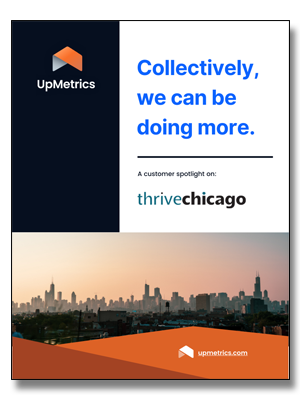5 Ways to Boost Nonprofit Fundraising with Data
Hint: Numbers matter.
In today’s increasingly competitive grant-funding landscape, having anecdotal evidence of organization success isn’t enough. Concrete, easy-to-understand data helps you not only tell your story of impact in a more tangible way, but also helps you to stand out from the crowd.
Here are five simple ways to get started.
1. State the problem that you’re trying to address
People want to understand the need before they are willing to commit time, energy, and money to a cause. Know the data around the problem you’re working to solve, and share relevant statistics that shed light on what matters most to your organization.
2. Clearly define your goals, and make them attainable
Give your potential donors a strong sense of your direction, and give them hope that your organization can achieve your desired outcomes. A plan of action is not only vital but also inspiring—after all, people choose the nonprofit sector because of the mission, and that is what resonates with funders as well.
3. Use data to show your progress toward your goals
There’s nothing more powerful than showing potential donors the progress that you’ve already made. Choose meaningful metrics and collect the appropriate data to show progress towards your organization’s goals.
4. Show how you’ve used data to drive decision making at your organization
Making adjustments according to your data shows that you’re actively engaged in improving your organization and taking all the necessary steps to be as effective as possible. It also shows a level of transparency and self-reflection that is key to engaging with donors and generating buy-in to your organization.
5. Share individual success stories
When you highlight individual success stories that incorporate data as well as the human element of your work, you can educate your audience about the effectiveness of your organization in a digestible—and compelling—way. Ultimately, while numbers are important, what often moves people is the meaning behind them—the real impact that your organization is having on the world.
"Data is the backbone on which we need to make decisions for effective programming. For GMEC, that means reaching more students through music education. Programmatic design can now be shaped against an impact model that takes into account programmatic work and district and student demographics. By creating this template/profile model, we can then determine what will be successful under a given set of circumstances. Once this is in place, we can allocate the right resources in the right amount and also determine how much funding will be needed to be successful."
—Ryan Zellner, Strategic Programs Director, GRAMMY Music Education Coalition
The UpMetrics platform is purpose-built for impact organizations to become data driven. UpMetrics tools and services make it easy to tell your story of impact, leveraging both quantitative and qualitative data.
Learn more about UpMetrics solutions.

August 8, 2019

